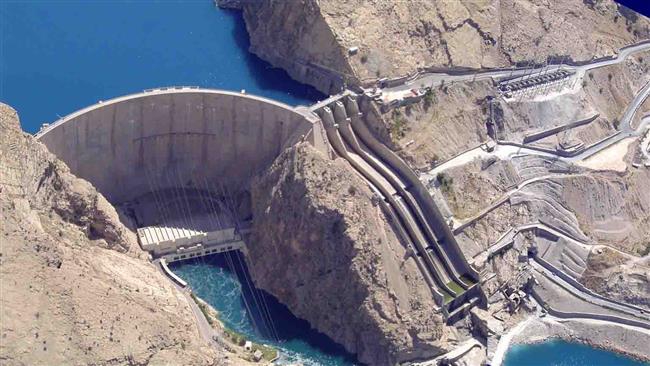Hydropower normally makes up 14% of Iran�s overall electricity mix, but this share has declined to less than five percent, deputy head of Tavanir, Iran�s power generation and transmission company, Gholamreza Khosh-Kholq said.
According to the official, power generation in most of the country�s nearly 50 hydroelectric plants has either stopped or sharply diminished.
On Tuesday, Iran came within a hair�s breadth of 50,000 megawatts-hour �red line� peak consumption as temperatures sizzled above 40 degrees Celsius, pushing the country to the brink of widespread brownouts and blackouts.
Tavanir said it had registered �a historic record of clean energy consumption in Iran and the Middle East� of more than 49,776 megawatts at a peak midday hour.
Hydroelectricity is among the most inexpensive renewable energy resources. It�s a reliable backup to the national grid when consumption spikes because of the relative simplicity and briskness of the hydro industry.
Water from a dam or canal usually enters a turbine which turns a generator, creating an electric field which is fed to a substation hooked up with the national grid. The water returns to the dam.
To increase power generation, more water is applied to the turbine in order to spin the generator faster but when there is not enough water, the turbine slows down and less power is produced.
�Because of the water shortage, there are predictions of hard times for Iran�s power industry,� Khosh-Kholq said.
Thermal plants and pollution
Less hydroelectricity means additional reliance on thermal plants which produce 82% of power in Iran by burning gas and oil products.
Iran commits one-third of its gas and more than 2 billion liters of fuel oil and diesel a year to its power plants, but they also produce 40% of the country�s air pollutants.
The use of gas is on the rise as a less polluting substitute to oil products. Last year, Iran fed 50 billion cubic meters of gas into its power plants, up from 36 billion cubic meters.
The productivity of thermal power plants is also low, generating electricity at 37% of their installed capacity. Iran has begun converting them to combined cycle stations to raise this rate to 45%.
According to official reports, between 14% to 18% of the electricity produced in Iran is also wasted during transmission.
�Energy conservation plans require better technology and Iran needs $200 billion of investment to reduce energy use intensity by 50%,� head of Iran�s Fuel Conservation Company Nosratollah Seifi said.
Cheap prices and waste
According to the International Energy Agency, energy consumption in Iran is twice more than the global average, mostly because it is offered at heavily subsidized rates to ratepayers.
In 2012, the Iranian government paid out $82 billion in energy subsidies, 21% of which went to electricity. The country still gives the biggest subsidy despite phasing out the plan.
According to Khosh-Kholq, much of the money from energy price hikes is returned to the treasury to be given to the citizens in cash handouts.
�Currently, electricity is sold at 570 rials (0.018 cents) per kilowatt to subscribers while we buy it at 900 rials from power plants.
�Power supply for 35 million subscribers across the country is not an easy task. A simple comparison will reveal that power is cheaper than other commodities,� he said.
By Press TV
# Tags











